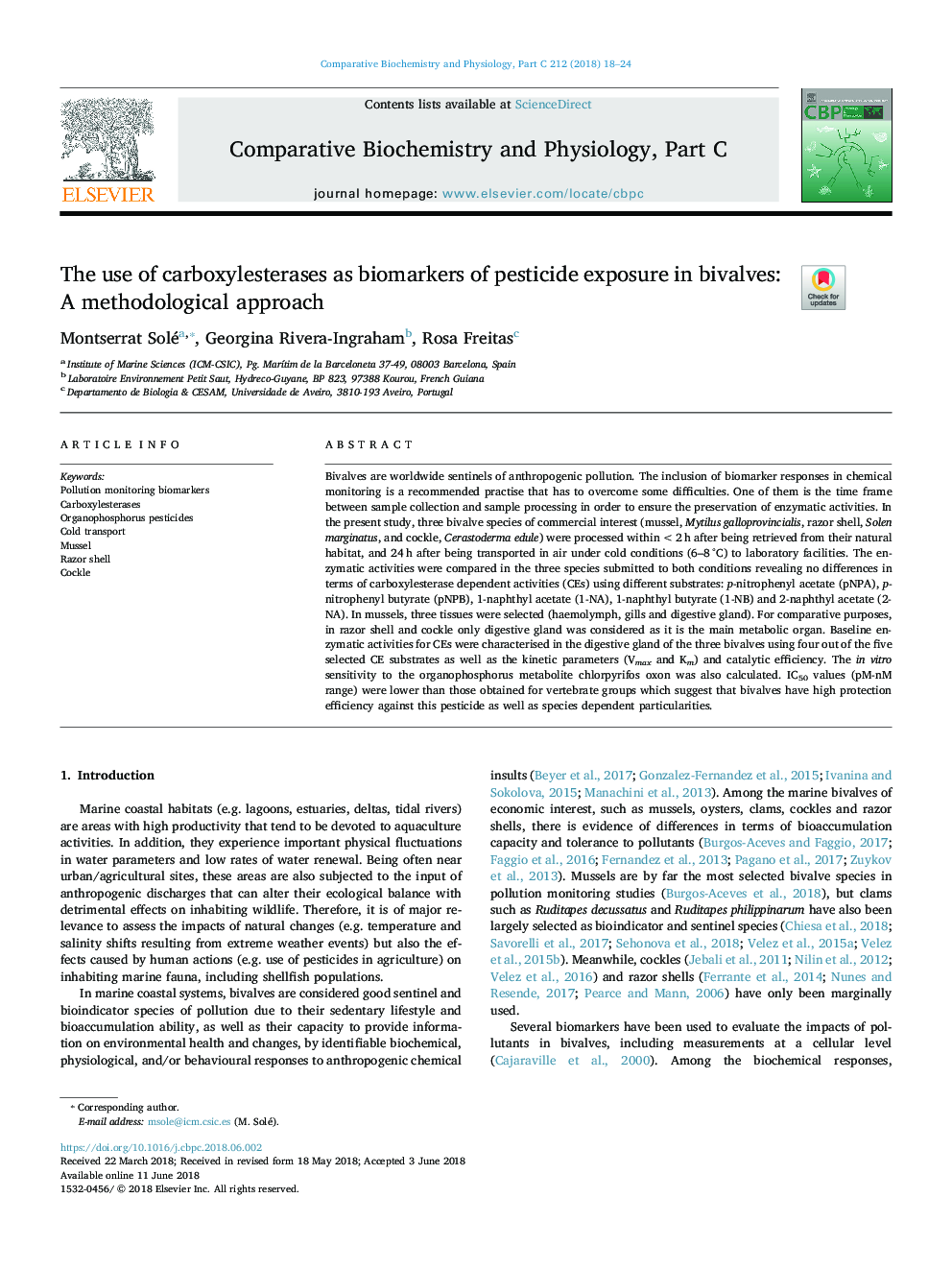| Article ID | Journal | Published Year | Pages | File Type |
|---|---|---|---|---|
| 8318959 | Comparative Biochemistry and Physiology Part C: Toxicology & Pharmacology | 2018 | 7 Pages |
Abstract
Bivalves are worldwide sentinels of anthropogenic pollution. The inclusion of biomarker responses in chemical monitoring is a recommended practise that has to overcome some difficulties. One of them is the time frame between sample collection and sample processing in order to ensure the preservation of enzymatic activities. In the present study, three bivalve species of commercial interest (mussel, Mytilus galloprovincialis, razor shell, Solen marginatus, and cockle, Cerastoderma edule) were processed within <2â¯h after being retrieved from their natural habitat, and 24â¯h after being transported in air under cold conditions (6-8â¯Â°C) to laboratory facilities. The enzymatic activities were compared in the three species submitted to both conditions revealing no differences in terms of carboxylesterase dependent activities (CEs) using different substrates: p-nitrophenyl acetate (pNPA), p-nitrophenyl butyrate (pNPB), 1-naphthyl acetate (1-NA), 1-naphthyl butyrate (1-NB) and 2-naphthyl acetate (2-NA). In mussels, three tissues were selected (haemolymph, gills and digestive gland). For comparative purposes, in razor shell and cockle only digestive gland was considered as it is the main metabolic organ. Baseline enzymatic activities for CEs were characterised in the digestive gland of the three bivalves using four out of the five selected CE substrates as well as the kinetic parameters (Vmax and Km) and catalytic efficiency. The in vitro sensitivity to the organophosphorus metabolite chlorpyrifos oxon was also calculated. IC50 values (pM-nM range) were lower than those obtained for vertebrate groups which suggest that bivalves have high protection efficiency against this pesticide as well as species dependent particularities.
Related Topics
Life Sciences
Biochemistry, Genetics and Molecular Biology
Biochemistry
Authors
Montserrat Solé, Georgina Rivera-Ingraham, Rosa Freitas,
